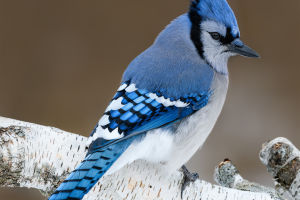On the vast surface of the earth, endless landforms are intertwined into a colorful picture. The towering mountains play the role of magnificent guardians between heaven and the earth, and the vast plains and rivers nourish all creatures.
Deserts and glaciers complement each other, and coastal landforms and volcanic landscapes constitute a natural wonder. Every landform contains traces of the earth's history, witnessing the evolution and transformation of the earth.
Here are some common landform types and their brief descriptions:
1. Mountains:
Mountains are high areas formed by the uplift of the earth's crust caused by tectonic movements or volcanic activities. Mountain ranges are usually made up of many peaks and peaks. Mountains are steep, rocky, canyon and plateau landform features commonly found in plate boundary regions such as the Himalayas, Alps, etc.
2. Plateau:
Plateaus are vast flat areas above sea level, usually formed by tectonic uplift or erosional cuts. Plateaus are higher than plains and flatter than mountains. Plateaus are usually composed of rocks and sediments, such as the Tibetan Plateau and the Atacama Plateau.
3. Plain:
Plains are vast low-lying areas at low elevations, usually formed by the accumulation of sediment. Plains tend to have fertile soils that are suitable for agriculture. Many large cities and agriculturally developed areas in the world are located on plains, such as the Great Plains of North America and the North China Plain.
4. Desert:
The desert is an arid area with little precipitation and sparse vegetation, mainly composed of dunes and desert grasslands. Deserts are larger, such as the Sahara Desert and the Gibbsland Desert in Australia.
5. Lakes and rivers:
A lake is a body of still water formed as a result of surface depressions, glacial erosion, or volcanic eruptions, usually with inflowing and outflowing rivers. Rivers are water channels on the surface of the earth that channel rainfall to oceans or lakes. There are many famous lakes and rivers in the world such as the Nile, the Amazon, and the Great Lakes of the United States.
6. Canyon:
Canyons are deep, narrow rifts formed by the erosion of rivers or glaciers, usually surrounded by steep rock walls. Famous canyons include the Grand Canyon of Colorado and the Brahmaputra Grand Canyon.
7. Coastal landforms:
Coastal landforms are landform features created by waves, tides, and rock erosion. This includes sea platforms, sea caves, sea arches, and sea stacks, among others. The shape of coastal landforms varies with geographic location and geological formations.
8. Glacial landforms:
Glacial landforms are formed by the erosion and accumulation of glaciers, including glacial valleys, glacial lakes, and glacial moraines. The Arctic and Antarctic regions are typical glacial landforms.
9. Volcanic landforms:
Volcanic landforms are landforms formed by volcanic eruptions, including volcanic cones, lava platforms, and crater lakes. The Hawaiian Islands are a famous example formed by volcanic activity.
These landform types are just some of the many and varied landforms in the world. Dynamic changes in geology and the earth's surface have resulted in the continuous evolution of landforms, forming our rich and colorful earth's landscape.
As we explore the landscape, we are not just travelers, but listeners. Listen to the whispers of the earth and feel the passage of time. In this boundless natural world, we draw wisdom and inspiration from it.
The diversity of landforms makes us marvel at the uncanny craftsmanship of nature and also evokes a sense of awe for the earth. Let us take care of this beautiful and fragile homeland together, so that the beauty of the landforms will last forever and bloom with eternal light.


